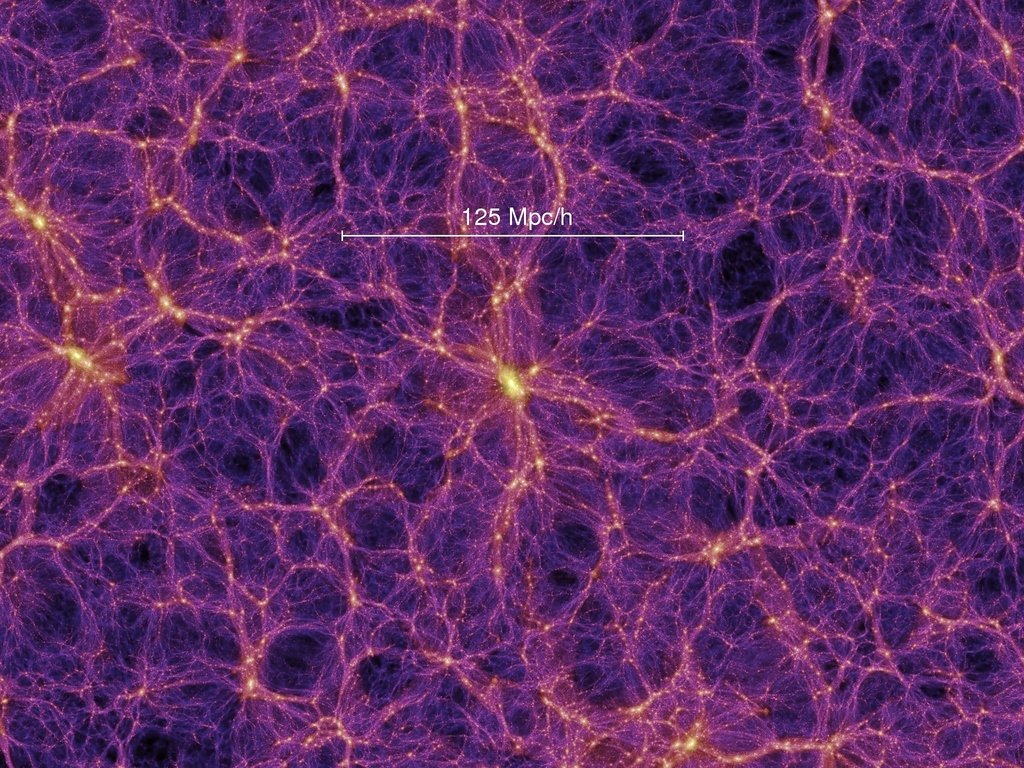What makes up more than 85% of the total matter in the universe yet it cannot be seen? Dark matter.
Image of the group of galaxies called the coma cluster, which held the first evidence for dark matter taken by the Spitzer Space telescope.
According to the US Department of Energy article, DOE Explains Dark Matter, we know little about it other than that it only interacts with ordinary matter through gravity. Despite our lack of knowledge, scientists do have overwhelming indirect evidence for dark matter. One of the facts that scientists agree upon is that dark matter played a very important role in the formation of the universe.
The term dark matter was first coined in 1933 by Fritz Zwicky of the California Institute of Technology to describe the unseen matter that must dominate one feature of the universe—the Coma Galaxy Cluster.
On October 25, Noah Lamb MS, will present "Exploring the Cosmic Mystery of Dark Matter" at Chestnut Hill Rotary’s breakfast program.
A simulation of what we'd expect dark matter to look like on a cosmic scale from the Millenium Simulation. If we had any pictures of dark matter, they wouldn't call it "dark" matter.
For almost a hundred years, mounting evidence leads astronomers to the strange conclusion that most of our universe is totally invisible. In order to learn more about this dark matter and prove it exists in the first place, physicists look for alternatives ways of “seeing” it in the hopes that it is not completely undetectable.
The history and science of the dark matter mystery serves as a case study on the rigorous ways scientists search for truth in a complex and confusing world.
“Knowing that most of the universe consists of a mystery substance of which we know little to nothing about doesn't sit right with me,” said Lamb.
Like most scientific fields, astronomy is always discovery something new. Astonomers believe they’ve discovered one tiny fraction of the universe where dark matter does not exist. Galaxy NGC 1277 appears to contain no dark matter, which could raise some questions about the standard cosmological model, outlined in the article, Astronomers Discover a Weird Galaxy That Could Change What We Know About Physics.
Lamb received his BA in Astrophysics at Franklin and Marshall University where he studied gas formations at the edge of distant galaxies, and MS in Physics from Drexel University where he currently doing his PhD dissertation as part of a dark matter experiment. Mr. Lamb specializes in computer simulations and mentoring new scientists.
When asked what influenced him most to study astronomy, “My grandfather was an astrophysicist, and conversations with him fostered a deep curiosity for space and its many mysteries.”
As for the future, Lamb said, “After my PhD, I expect to focus more on science education and communication,” said Lamb. “I want to work somewhere where I can help people learn, see that light click on in their eyes, whether that's a school, museum or planetarium.”
Join us at the Chestnut Hill Rotary Breakfast meeting, Wednesday October 25, 7:30 a.m. Center on the Hill, Widener Hall, 8855 Germantown Avenue (next to Chestnut Hill Hospital). Free parking available behind the Presbyterian Church of Chestnut Hill




